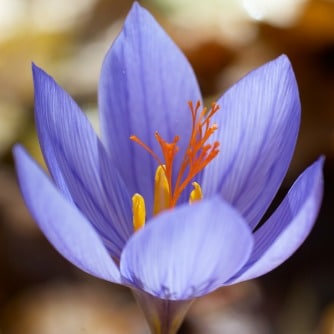Saffron is a spice derived from the flower of Crocus sativus, commonly known as the saffron crocus. Saffron has been long-used as a folk medicine. Scientists have identified that saffron contains vitamin B2 along with a yellow flavonoid called crocin, a bitter glycoside called picrocrocin, and the volatile, aromatic substance safranal. Korean researchers revealed that Crocetin, a glycosylated carotenoid present in saffron, showed approximately 5- to 18-fold higher cytotoxicity than crocin, a carboxylic carotenoid in saffron. Importantly, the team found that both crocetin and crocin reduced the protein expression of lactate dehydrogenase A (LDHA), one of the targets for chemoprevention in cancer cells, by 34.2% and 10.5%, respectively.
Flower Power
Kim SH, Lee JM, Kim SC, Park CB, Lee PC. “Proposed cytotoxic mechanisms of the saffron carotenoids crocin and crocetin on cancer cell lines.” Biochem Cell Biol. 2014 Apr;92(2):105-11.
RELATED ARTICLES




